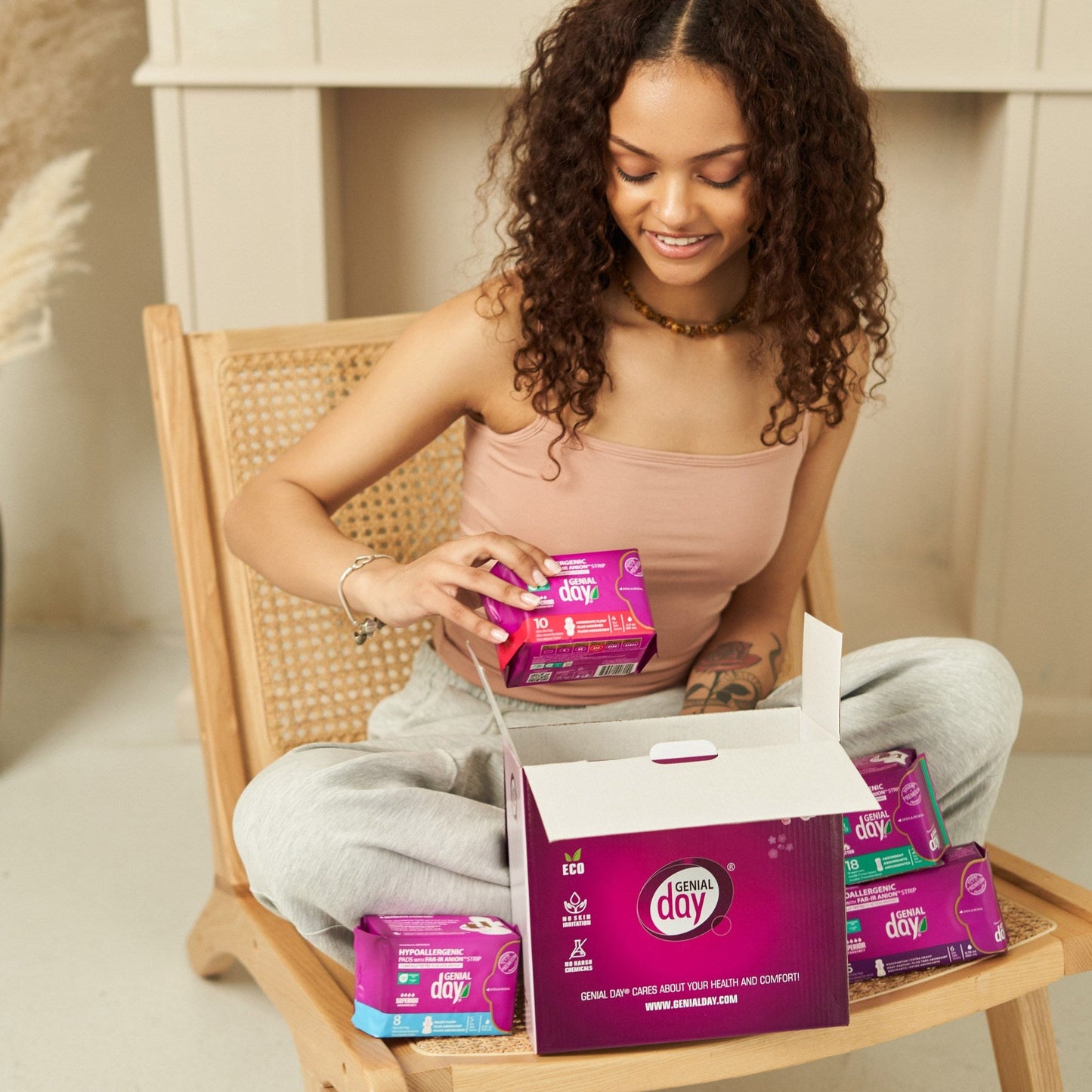In our recent blog post, we've shared some shocking facts: there's no mandate requiring manufacturers of pads and tampons to disclose all of their ingredients. Since the manufacturers are not required to disclose what their products are made of, often times we're left wondering. Luckily, there's science that can help us make an educated guess.
So, what can be found in your typical grocery store sanitary pad?
Some doctors have pointed out that an average grocery store pad may contain dioxins, synthetic fibers, and petrochemical additives.
Some have suggested that conventional sanitary pads can contain the equivalent of about four plastic bags! With everything we now know about the hazardous nature of plastic chemicals, this alone is cause for concern.
But wait, there's more...
Conventional tampons definitely contain pesticides: A whopping $2 billion is spent annually on pesticides to spray cotton crops. You don't need to be a scientist to infer that if cotton contains pesticides, pads that are made of cotton are going to be tainted as well.
In addition, conventional tampons probably contain genetically-modified organisms (GMOs). According to the USDA, 94 percent of all U.S. cotton is genetically engineered.
Tampons and pads with odor neutralizers and artificial fragrances are virtually a chemical soup, laced with artificial colors, polyester, adhesives, polyethylene (PET), polypropylene and propylene glycol (PEG), contaminants linked to hormone disruption, cancer, birth defects, dryness, and infertility.
One can't help but wonder whether using a GMO pad or tampon several times every month is any different than ingesting GMO food. But it may even be worse, considering the vaginal wall is highly permeable, allowing toxins like pesticide residue and GMO proteins direct access into the bloodstream.
And then, there's an issue of bleach still being used in many pads and tampons...
While some manufacturers have made progress thanks to the pressure from consumers like you, who can blame women for seeking healthier, more transparent alternatives?




